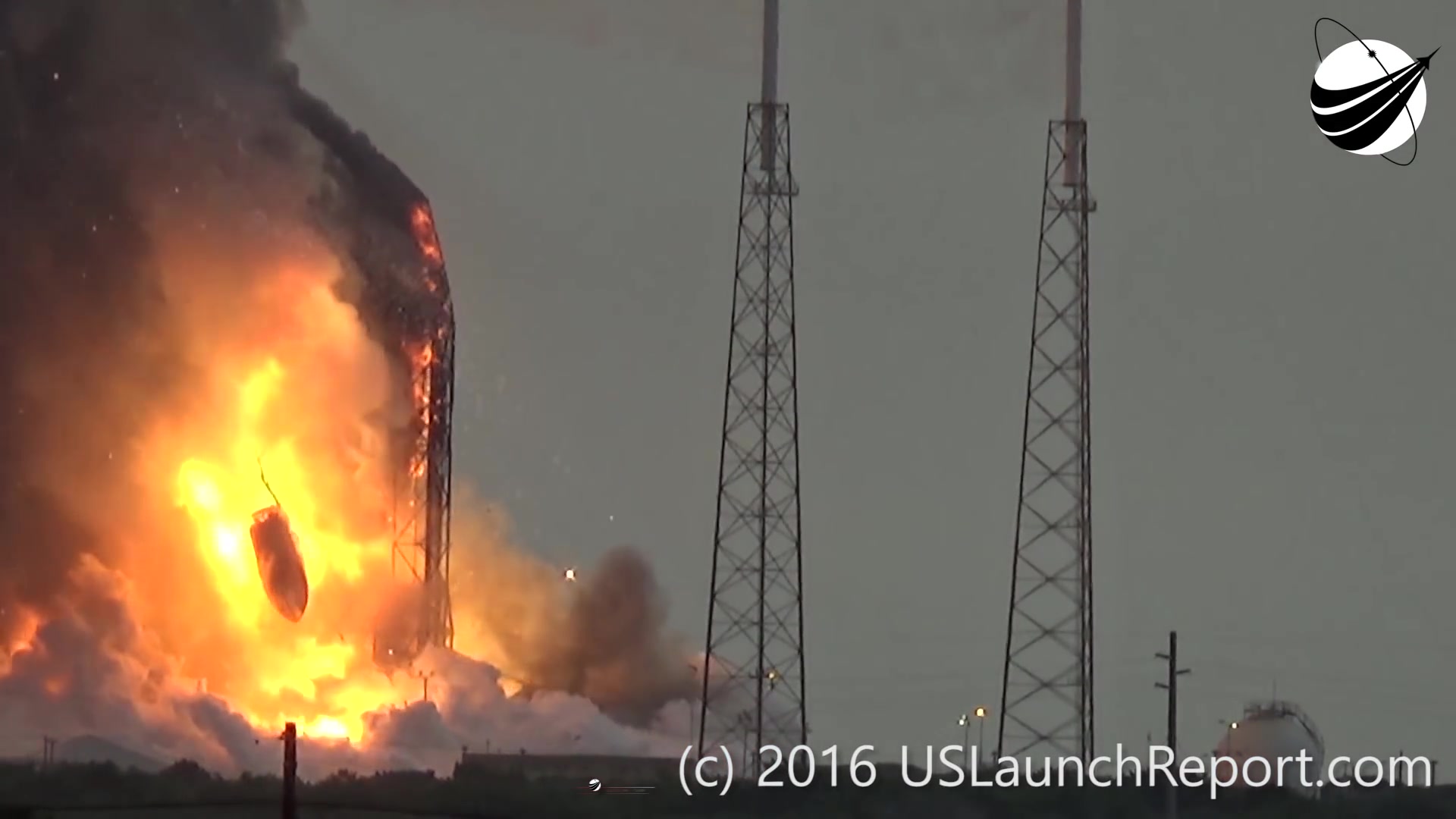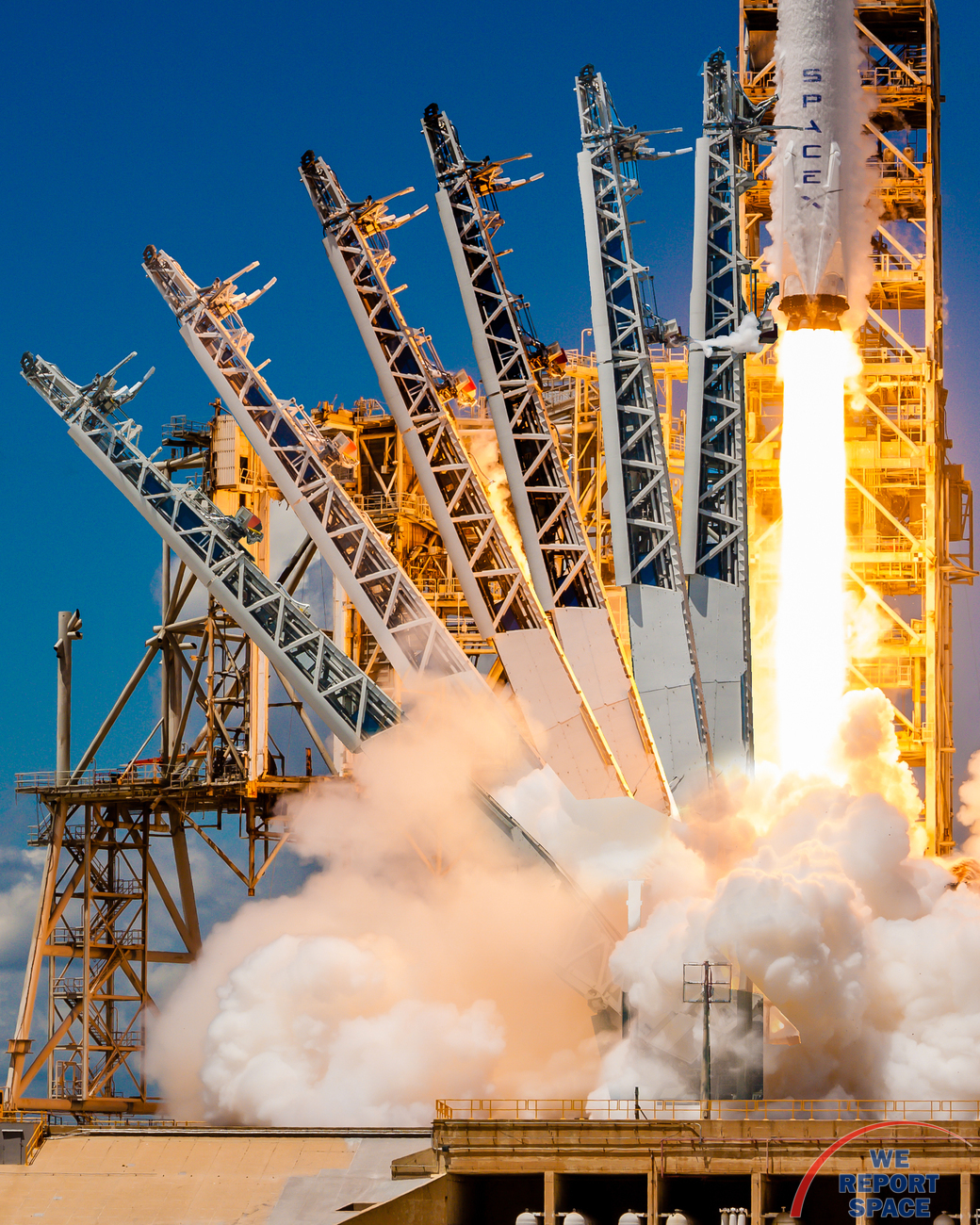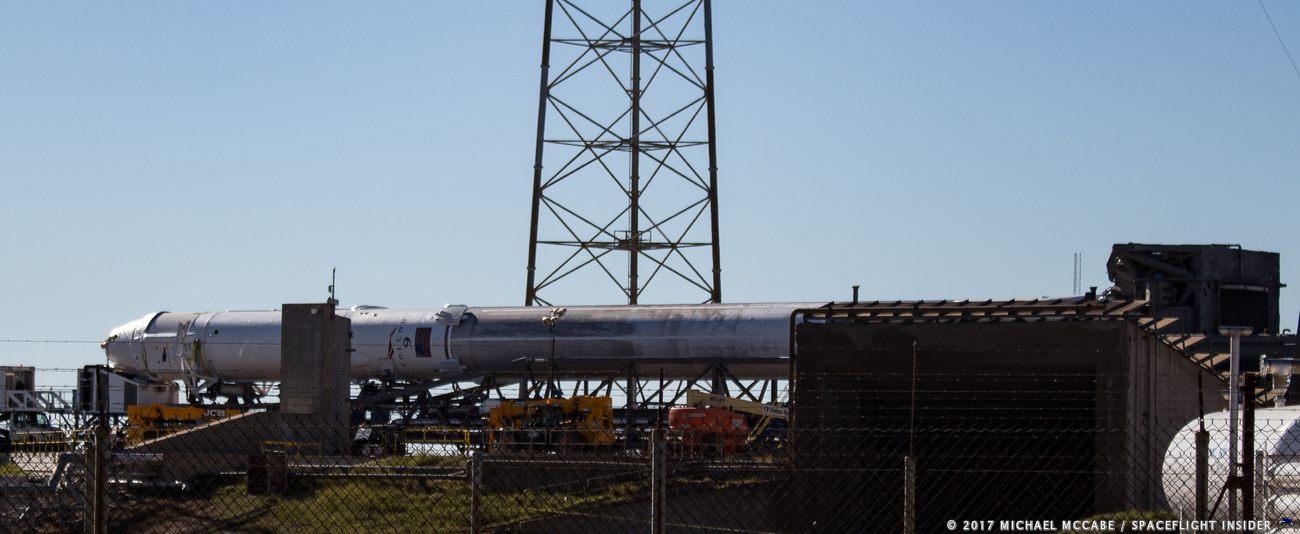Re-launch of the used first stage and cargo capsule to the ISS. NASA is not against
Today, the 13th launch of the mission for the delivery of 2205 kg of cargo to the ISS was successfully launched. The launch was postponed several times - more thorough testing was required, and also foreign particles were found in the second-stage fuel system. This launch is notable for several events. One of them is the return to service of the SLC-40 site after the explosion last September, which caused the destruction of the AMOS-6 satellite and the site itself. For the first time, SpaceX has 3 active pads.

The moment of the explosion during the test trials in September 2016. The photo shows the head fairing with the AMOS-6 satellite inside. Source: USLaunchReport
It took more than a year and $ 50 million to upgrade the SLC-40 launch pad and ensure compatibility with the LC-39A. “We worked to unify the sites: 39A, 40, and to some extent VAFB. If we find the problem at one site, we can fix this problem at all sites, ”said John Muratore, director of the SLC-40 start-up complex.
The SpaceX company uses the so-called Transporter-Erector (TE), which raises the rocket and ensures its rigid fastening in the vertical position until the moment of launch, and at the moment of launch it detaches (deviates) from the rocket. In the past, it would take 25 minutes to raise or lower the rocket. Now an improved pair of hydraulic actuators can lift the rocket in five minutes or lower it in three minutes. The TE has been upgraded to use the same return mechanism used at site 39A. This takes TE away from the flames of the rocket, so it reduces structural damage. In addition, the updated TE was painted gray.

Time lapse of the return mechanism. Source: We Report Space
At the old site all the wires converged at the same point under the site. In the new system, analog wires go from the sensor to one of ten nodes. Signals are then transmitted to redundant fiber optic networks. When the signals reach the fiber-optic network, signal contamination by electrical noise is not possible. It will be a more reliable design.

PH Falcon 9 with the Dragon capsule installed before starting. Source: Space Flight Insider
Interestingly, the first stage before the flight was not cleared of soot, in contrast to the carbon adapter connecting the first and second stages. On the Dragon capsule the heat shield and external panels were replaced.
According to Jessica Jensen, SpaceX's director of flight management at SpaceX, negotiations began about a year ago on the use of a repeat launch vehicle under the CRS program. “We have been working with NASA since January of this year to ensure that the risk of using a flying stage is equivalent to the risk of launching a new accelerator,” she said.
The director of the ISS program from NASA, Kirk Shirman, said that the agency approved the use of only a single accelerator that performed a similar mission, in which it was not subjected to the same stress as when launching satellites into a geostationary orbit. NASA finally approved the re-use of the rocket about two weeks ago, after SpaceX completed the readiness report.
While NASA feels comfortable with reusable accelerators, it happily accepts the launch of the already-flying Dragon ship. The capsule Dragon, which flew for the first time in the sixth mission of CRS SpaceX in April 2015, went to this flight. It marks the second CRS mission to use the capsule.
“For the remainder of the CRS missions, we plan to continue using only previously flying Dragon capsules,” said Jensen. She later clarified that about seven Dragon spacecraft are available for reuse.
CRS-13 mission launch video
PS SpaceX opened accreditation for journalists who want to cover the launch of Falcon Heavy in January next year.

The moment of the explosion during the test trials in September 2016. The photo shows the head fairing with the AMOS-6 satellite inside. Source: USLaunchReport
It took more than a year and $ 50 million to upgrade the SLC-40 launch pad and ensure compatibility with the LC-39A. “We worked to unify the sites: 39A, 40, and to some extent VAFB. If we find the problem at one site, we can fix this problem at all sites, ”said John Muratore, director of the SLC-40 start-up complex.
The SpaceX company uses the so-called Transporter-Erector (TE), which raises the rocket and ensures its rigid fastening in the vertical position until the moment of launch, and at the moment of launch it detaches (deviates) from the rocket. In the past, it would take 25 minutes to raise or lower the rocket. Now an improved pair of hydraulic actuators can lift the rocket in five minutes or lower it in three minutes. The TE has been upgraded to use the same return mechanism used at site 39A. This takes TE away from the flames of the rocket, so it reduces structural damage. In addition, the updated TE was painted gray.

Time lapse of the return mechanism. Source: We Report Space
At the old site all the wires converged at the same point under the site. In the new system, analog wires go from the sensor to one of ten nodes. Signals are then transmitted to redundant fiber optic networks. When the signals reach the fiber-optic network, signal contamination by electrical noise is not possible. It will be a more reliable design.

PH Falcon 9 with the Dragon capsule installed before starting. Source: Space Flight Insider
Interestingly, the first stage before the flight was not cleared of soot, in contrast to the carbon adapter connecting the first and second stages. On the Dragon capsule the heat shield and external panels were replaced.
According to Jessica Jensen, SpaceX's director of flight management at SpaceX, negotiations began about a year ago on the use of a repeat launch vehicle under the CRS program. “We have been working with NASA since January of this year to ensure that the risk of using a flying stage is equivalent to the risk of launching a new accelerator,” she said.
The director of the ISS program from NASA, Kirk Shirman, said that the agency approved the use of only a single accelerator that performed a similar mission, in which it was not subjected to the same stress as when launching satellites into a geostationary orbit. NASA finally approved the re-use of the rocket about two weeks ago, after SpaceX completed the readiness report.
While NASA feels comfortable with reusable accelerators, it happily accepts the launch of the already-flying Dragon ship. The capsule Dragon, which flew for the first time in the sixth mission of CRS SpaceX in April 2015, went to this flight. It marks the second CRS mission to use the capsule.
“For the remainder of the CRS missions, we plan to continue using only previously flying Dragon capsules,” said Jensen. She later clarified that about seven Dragon spacecraft are available for reuse.
CRS-13 mission launch video
PS SpaceX opened accreditation for journalists who want to cover the launch of Falcon Heavy in January next year.
All Articles